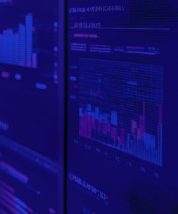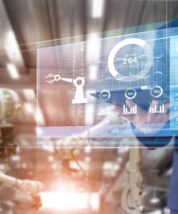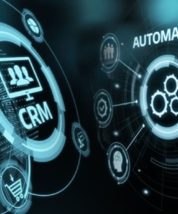Introduction
Integrating AI data analytics tools enables you to benefit from automated data analysis, providing valuable insights in real time for instant, informed decision-making.
Why automate data analysis?
Data automation has become a strategic necessity for optimizing all operations
1 - Save time
Automating data analysis considerably reduces repetitive manual tasks, freeing up time for higher value-added activities.
Thanks to high-performance data analysis tools, data collection and processing processes are streamlined, speeding up the analysis cycle.
2 - Reduce human error
By integrating automated data analysis solutions, the risk of human error is reduced, guaranteeing more reliable and consistent results.
3 - Better decision-making
Access to real-time insights through AI data analytics enables decision-makers to act quickly and effectively, as AI data analytics systems provide recommendations based on in-depth analysis for informed, proactive decision-making.
4 - Scalability
Data automation offers the ability to manage large volumes of data without additional effort. As the amount of data increases, automation easily adapts analytical processes without requiring a proportional increase in human resources.
In short, the benefits of data automation are undeniable, and are transforming the way we exploit information to remain competitive in a dynamic environment.
Preparing the ground for automation
To develop data automation, it is imperative to prepare the ground:
1 - Audit current analysis processes
Before initiating a data automation project, it is essential to carry out a thorough audit of existing analysis processes. This helps to identify weak points, bottlenecks and opportunities for improvement.
Understanding workflows enables efforts to be directed towards efficient data analysis automation and ensures that new solutions really do meet the organization's specific needs.
2 - Identifying repetitive tasks
A key step in preparing for data automation is to identify repetitive tasks within analytical processes.
These tasks, often time-consuming and prone to human error, are the ideal target for automation. Eliminating these redundant activities maximizes the benefits of data automation, allowing you to concentrate on more strategic and creative analyses.
3 - Data quality assessment
Data quality is important to the success of any automated data analysis initiative.
Before deploying AI data analytics tools, it's imperative to assess the accuracy, completeness and consistency of available data, as poor data quality can compromise analytical results and hamper decision-making.
4-Standardization of data formats :
To ensure smooth integration into a data analysis automation system, it is essential to standardize the data formats used, as the diversity of formats can lead to complications during automated processing. Adopting a consistent approach to data structuring and storage facilitates the use of data analysis tools and optimizes overall process efficiency.
5-Setting up a consistent nomenclature :
Finally, establishing a consistent nomenclature for data sets is very important to the success of data automation. A clear and uniform nomenclature not only improves communication, but also ensures that data analysis AI systems interpret information correctly.
This consistency also facilitates the auditing and monitoring of analytical performance, thus enhancing the reliability of the results obtained by automation.
The main stages of data analysis automation:
There are 4 main stages in the data analysis, and each stage of the process contributes to creating an efficient workflow that leverages information resources while minimizing manual effort.
1 - Data collection
The first step in the data automation process is to automate the collection of information from various internal and external sources, such as customer relationship management (CRM) systems, web analytics tools and databases.
Tools such as Google Analytics enable these sources to be seamlessly integrated, ensuring that data is constantly updated and accessible for further analysis.
This automation reduces the time spent on manual data collection and minimizes potential errors to facilitate automated data analysis.
2 - Data cleaning and preparation
After data collection, it is essential to clean and prepare the data to guarantee its quality. Specialized tools such as Trifacta or Talend automate data cleansing, duplicate management and information structuring.
These tools apply predefined rules to identify and correct inconsistencies, thus improving the reliability of subsequent analyses.
Effective cleansing is a prerequisite for reaping the full benefits of data automation, as it ensures that only accurate, relevant data is used in analyses.
3 - Data transformation and enrichment
Transforming raw data into actionable information is a key step in data analysis automation.
Platforms such as Microsoft Power BI or Tableau offer advanced features to automate this process and enable users to easily convert data into meaningful visualizations.
These tools enrich datasets by integrating additional information from other sources, increasing analytical value and helping to identify trends or hidden insights.
4 - Visualization and reporting
Finally, visualization and reporting are the culmination of the automated data analysis process. Tools such as Looker Studio, Domo, or Sisense automatically generate reports, dashboards and graphs based on analyzed data, making it easy to create interactive visualizations and share them, so that all stakeholders have up-to-date information with which to make informed decisions.
And with AI data analytics, these tools can even provide predictive insights and thus enhance data-driven decision-making capability.
Data analysis automation tools
There are several data analysis automation tools, including business intelligence tools, data management tools, Machine Learning or AI solutions and custom scripts and APIs :
1 - Business Intelligence (BI) tools
Business Intelligence platforms such as Power BI, Tableau, and Google Data Studio play an essential role in data automation, as they enable raw data to be transformed into interactive visualizations and dynamic reports.
Power BI, for example, integrates seamlessly into the Microsoft ecosystem and offers automated data analysis and AI data analytics capabilities, enabling users to generate insights quickly from a variety of data sources; Tableau is also renowned for its ability to handle large volumes of data and enables in-depth exploration thanks to its advanced visualizations; Google Data Studio, meanwhile, offers an intuitive approach to creating personalized, collaborative reports.
2 - Data management tools
Solutions such as Talend, Apache Nifi and Alteryx are indispensable for cleansing, transforming and integrating data in an analysis automation process.
Talend offers a complete suite of tools for managing data flow, enabling efficient automation of data cleansing and preparation.
Apache Nifi stands out for its ability to manage data flow in real time, facilitating the collection and distribution of information.
Alteryx, with its user-friendly interface, enables non-technical users to automate complex analyses while easily integrating a variety of data sources.
3 - Machine Learning and AI solutions
Platforms such as DataRobot, AWS SageMaker, and Google Cloud AI are at the heart of data automation and integrate advanced machine learning capabilities. DataRobot makes it possible to create predictive models without requiring in-depth expertise in data science, making AI data analysis accessible to a wider audience.
AWS SageMaker offers a complete environment for building, training and deploying large-scale machine learning models, while Google Cloud AI provides a range of APIs for easily integrating AI functionality into existing applications.
4 - Custom scripts and APIs
The use of languages such as Python and R, as well as the integration of third-party APIs, enables tailor-made automation that specifically addresses unique needs.
Python scripts can be used to automate data collection and processing, facilitating the implementation of a customized data automation strategy.
In addition, APIs can be used to connect internal systems with external services to optimize information flow and enhance automated data analysis capabilities.
This flexibility is essential to leverage the benefits of data automation, enabling seamless integration between various tools and platforms.
Best practices for automation
To proceed with automation, we recommend these best practices to adopt:
1 - Define clear objectives
The first step to successful data automation is undoubtedly to define clear, measurable objectives. This means identifying precisely what you would like to analyze and automate, because by establishing specific objectives, data analysis automation efforts will be directed towards tangible results, making it easier to monitor performance and adjust strategies according to the results obtained.
This clarity of purpose optimizes the use of available data analysis tools.
2 - Choosing the right tools
Selecting solutions adapted to the complexity of the data is essential to guarantee effective automated data analysis. Taking the case of a small business, it might opt for a tool like Google Data Studio for its analytical needs, while a large enterprise might require a more robust solution like Tableau or Power BI.
As we can see, it's vital to evaluate functionality, scalability and integration with existing systems to maximize the benefits of data automation.
A judicious choice of tools also makes it possible to fully exploit the capabilities of AI data analytics and thus improve the quality of the insights generated.
3 - Standardize processes
Establishing automatic workflows with clear rules for data processing is fundamental to ensuring the consistency and reliability of analyses.
This can include creating standardized templates for data collection and cleansing, as well as defining protocols for the use of data analysis tools.
4 - Establish data governance
Ensuring data quality and regulatory compliance (such as GDPR or CCPA) is essential in any data analytics automation strategy.
This requires the establishment of clear policies regarding data management and sharing within the organization.Good governance reinforces confidence in the results of AI data analysis and facilitates their adoption by stakeholders.
5 - Creation of reusable models and generation of periodic reports
Setting up reusable models for analysis not only speeds up the process of automating data analysis but also ensures consistency in the results obtained.
These models can be enhanced over time to adapt quickly to changes in the market and maintain a solid foundation for future analysis through a structured and systematic approach to their data automation strategy.
The challenges of automating data analysis
1 - Data complexity
One of the main challenges of data automation lies in the inherent complexity of the data itself.
Companies have to cope with a variability of data formats, ranging from CSV files to relational databases to unstructured data.
What's more, with the growing volumes of data generated every day, it becomes essential to implement robust data analysis automation processes to ensure that all this information can be processed efficiently.
Automated data analysis therefore requires data analysis tools capable of managing this diversity while maintaining the quality and integrity of the information.
2 - Systems integration
Ensuring compatibility between different data sources is another major challenge in data automation.
Using a multitude of systems and applications to collect and store their data can complicate integration and information sharing; to achieve successful integration, it is important to use data analysis tools that support a variety of formats and protocols, enabling efficient data harmonization.
Successful integration facilitates access to valuable insights via AI data analytics, improving decision-making.
3 - Technological evolution
The speed with which technologies evolve represents a constant challenge for companies seeking to automate their analysis processes.
Regular tool updates and the emergence of new technologies require continuous adaptation, so it's vital to invest in training and development to keep abreast of the latest advances in AI data analysis and analysis tools.
4 - Security and confidentiality
With increasing regulations such as GDPR and CCPA, it's important to ensure that automation processes comply with these standards while protecting personal information.
This means implementing robust security measures such as data encryption and access control to prevent any leaks or breaches.
Integrating secure practices into automated data analysis processes is essential to maintain customer confidence and avoid potential legal consequences linked to inadequate management of sensitive data.
Conclusion
Data automation is radically transforming the analytics landscape. By integrating advanced technologies such as artificial intelligence, data automation enables automated data analysis and delivers valuable insights in real time. The benefits of data automation include reduced human error, significant time savings and improved decision-making thanks to accurate analysis.
However, data automation must overcome challenges such as data complexity and system integration.
In short, the future of data analysis automation is essential for organizations wishing to remain competitive and adapt these technologies by following best practices to improve operational efficiency and make informed decisions based on reliable data.
FAQ
1- How do I choose the best tool for automating my data analysis?
To choose the best data automation tool, it's essential to assess your company's specific needs, such as data size and the types of analysis required. Consider options like Tableau or Power BI for their ease of use and visualization capabilities, and make sure the tool integrates well with your existing systems.
2- Can small businesses benefit from automated data analysis?
Yes, small businesses can greatly benefit from data analysis automation by improving efficiency and reducing errors.
Accessible tools such as Google Data Studio enable small businesses to take advantage of analytics without the need for major investment, enabling them to make decisions based on accurate, relevant data.
3- How can data security be guaranteed in an automated system?
To ensure security in an automated data analysis system, it's important to implement robust security measures such as data encryption and strict access controls.
In addition it will be necessary to ensure compliance with data protection regulations, such as GDPR, and to carry out regular security audits to identify and correct potential vulnerabilities.










